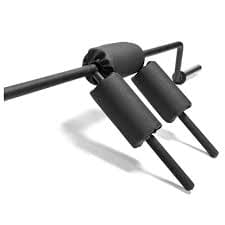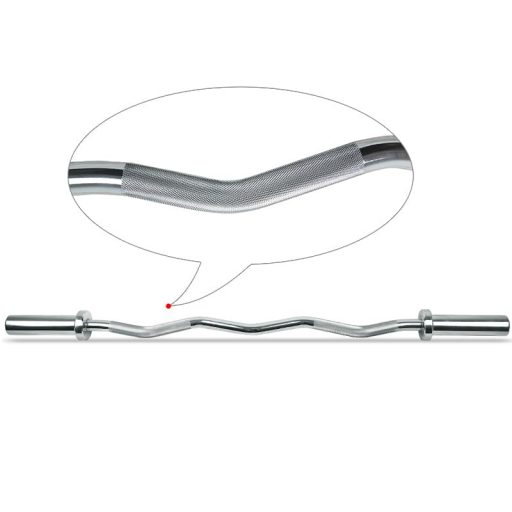Different Types Of Deadlifts
Different Types Of Deadlifts
First, master the conventional barbell deadlift. After that, take a look at the other different types of deadlifts listed below. Each of these deadlifts can exercise your hamstrings, hips, core, quadriceps, and lower and upper back. However, switching between the various deadlift changes can be tailored to each specific muscle. This will increase overall strength and avoid dullness in exercise.
Traditional Barbell Deadlift
If you’re new to the movement, ask a trainer or coach to check your deadlift form. If your lower back rounds at any point during the lift, drop the weight.
Make it a deficit deadlift by standing on a platform (box, bench, step) while performing the lift. The elevation encourages a greater range of motion, thereby recruiting more muscles and burning more calories.
- Stand with feet hip-width apart, barbell pushed up versus shins, core braced.
- Keeping a flat black and happy chest, joint at hips to bend upper body forward, pushing butt backward, till hands can get to barbell with straight arms.
- Grip the bar with hands dealing with shins, hands shoulder-width apart. Screw pinkies right into the bar to involve lats. (Think: Rotate your hands somewhat external).
- Look right ahead to preserve a neutral neck. Then, maintaining arms directly and core tight, squeeze glutes as well as pull the bar up along the front of legs up until standing upright.
- Keeping a flat back, hinge at hips and move the bar in a straight course down the front of legs to go back to start.
Standard Dumbbell Deadlift
Think about a barbell with a big ‘ole plate on each end. The handles on a dumbbell are much lower to the ground than a loaded-up barbell is, explains Luciani. That means you can reach the dumbbells farther toward the ground, taking the hamstring muscles through a greater range of motion compared to the traditional barbell deadlift.
Past that, since the weights are controlled separately, Dumbbell deadlifts are an excellent means to attend to any type of muscular discrepancies between the right as well as left side. And pulling two separate dumbbells rather than one barbell actually compels you to engage your midline for security, so it has added core-strengthening advantages.
The one drawback? Since the troublesome form of dumbbells makes them a bit harder to keep, you’re simply not mosting likely to have the ability to lift as high as you might with a barbell.
- Stand with feet hip-width apart, one dumbbell in each hand, hands facing thighs.
- Brace your core. Then, keeping arms straight, push butt back to slide both dumbbells down the fronts of legs at the exact same time.
- Continue lowering until the weights touch the floor, or until you feel it in your hamstrings– whichever comes.
- Keeping a pleased chest, press into feet to go back to standing, squeezing glutes at the top.
Single-Leg Romanian Deadlift
When it pertains to posterior chain exercises, in my point of view, the single-leg Romanian deadlift is the very best. Why? Due to the fact that the single-leg RDL does not simply #werk your hamstrings, glutes, lats, and also potter’s wheel muscles … it functions them unilaterally, aka individually. Compeling your arm or legs to work separately is necessary for fixing muscular inequalities as well as inevitably developing a more powerful body and midsection. (P.S.. You need to work on pistol squats, also).
You can perform this with a barbell, like a conventional deadlift, or you can go lighter using dumbbells or a kettlebell. I recommend lifting one-fourth to one-third of what you can lift with a conventional deadlift, and slowly increase from there.
- Stand with feet piled under hips. If making use of dumbbells or a kettlebell, hold in both hands in front of hips. Change weight onto the left leg, best foot slightly behind, stabilizing on toes.
- Proactively press the left leg into the ground and also shoot the right leg back while hinging onward at the hips, reducing weights along the front of the left leg to mid-shin height. (If utilizing a barbell, order the barbell with both hands, arms totally prolonged as well as shoulder-width apart, hands encountering shins.).
- Maintaining a tight core and flat back, all at once pull appropriate leg to meet the left while pulling the weight up the left leg to go back to standing, squeezing standing leg glute at the top.
Sumo Deadlift
Instead of taking the hips-width position you take with the traditional deadline, for the sumo deadlift you’ll expand your feet. This reduces the range the range the barbell has to travel to the top of the rep, which increases just how much weight you’ll have the ability to lift. The broader position also increases just how tough your glutes, quads, as well as hip adductors have to work during the action. Check out what muscles does sumo deadlift work .
- Stand with feet concerning two times shoulder-width apart, toes pointed outside to make sure that they’re angled at 10 and also 2 on the clock.
- Position barbell versus shins to ensure that, when looking directly down, toes peek out the front side of the bar.
- Brace core. Keeping a right back, bend knees and joint forward at aware of order the bar with both hands making use of an overhand grip, shoulder-width apart.
- Press with heels to lift the bar off the ground, thrusting hips forward as well as squeezing glutes while standing as promptly as feasible.
- Lower the bar back to the flooring, maintaining it as near to body as possible and without rounding back.
For more information, please refer to our post about how to sumo deadlift .
Hex Bar Deadlift
Shock, shock! For this variant, you’ll require something called a “hex bar” or a catch bar. The hex bar is shaped like a large hexagon with handles on each side. “You tip inside the bar, and afterwards as opposed to reaching in front of you to hang on as well as lift the weight, you get the handles at the side,” describes Luciani. (Right here’s an overview to all the various types of barbells you’ll discover at the gym– and also just how much they evaluate).
It could force you into better deadlift form. You’re less likely to round– or put undue pressure on– your spine, In fact, one 2016 study published in the Journal of Strength and Conditioning Research found that hex bar deadlifts activate more leg musculature and less back musculature compared to a straight barbell. Learn more at what do hex bar deadlifts work .
- Step best slap bit in the middle of the hex bar with feet hip-width apart.
- Push butt back and also flex at the knees till hands can reach handles with straight arms.
- Stick chest out and also pull shoulders back and also down. After that, keeping back flat as well as arms shut out, align legs to stand.
- Maintaining back flat, hinge at the hips and also bend knees to carefully lower bar back to start.
So what’s the difference between hex bar vs barbell deadlift ?
Romanian Deadlift
All these deadlift variants are going to hammer your hamstrings– but the Romanian deadlift works them one of the most. That’s because every rep starts with you standing, the weight at thigh-level (in contrast to the weight versus your shins). And also, as opposed to decreasing right to the floor, your lower till you really feel a stretch in your hamstring before returning to standing, describes Luciani.
In a traditional deadlift, your hamstrings obtain a little “rest” at the top and also bottom of each rep. Romanian deadlifts take that away, which ramps up the amount of time your hamstrings are under tension. The outcome: hamstring gains.
Packing note: Do * not * fill the barbell to the weight you ‘d use for the conventional deadlift. Go lighter! The Romanian deadlift will still sustain your strength goals, yet due to the way the weight is loaded in this activity, and also the quantity of time your hamstrings are under stress, you won’t be able to lift as heavy.
Oh, and also if you don’t have a barbell, no concerns. You can do this activity with dumbbells, kettlebells, or a small barbell instead.
- Stand with feet hip-width apart, bar pushed against shins. Brace core and tip upper body forward to grab bar with straight arms, hands shoulder-width apart. Keeping back flat, pull bar to standing. This is the begin position. (If making use of one more kind of weight, pick it up as well as keep in front of thighs to start.).
- Maintaining knees soft and also back flat, push hips back as well as lower the weight along the front of legs. Rather than decreasing weights right to ground, quit when there’s a stretch in the hamstrings.
- Squeeze hamstrings as well as core to bring the bar back to begin. Squeeze glutes on top.
How to Incorporate Deadlifts Into Your Workout
Undoubtedly, it depends on the time and duration of your strength training, your convenience in weight space, and your fitness goals. Luciani recommends doing 4-6 sets of 3-8 reps with at least 90 seconds of rest between sets. Do not skimp on the rest, Your body needs the rest to recover so that you can hit the weight and also relocate well.
If you’re not sure how much to lift, start low and slow. A good goal for someone new to lifting is to work towards lifting their body weight.
If you feel it laid-up, or what you’re experiencing is discomfort, stop. All the terrific benefits of the deadlift head out the home window when your type isn’t great. Fair.
If you can not properly deadlift, the chance that you pull a muscular tissue or stress your when choosing something up is high. The deadlift is a true full-body activity, deadlifts work your:
All of these deadlifts work your hamstrings, glutes, core, quadriceps, as well as lower and also upper back, however alternating in between the different deadlift variants can target details muscle mass, improve overall strength, and avoid workout boredom.
In fact, a 2016 study published in the “Journal of Strength and Fitness Research” found that compared with straight barbells, the deadlift effect of hexagonal barbells is better. Because the leg muscles and back muscles are less, all of these The deadlift variant is most likely to exercise your hamstrings. However, the Romanian deadlift is one of the most effective exercises. See our post about how to improve deadlift .
Why You Ought to Be Deadlifting
2 words: injury avoidance. If you can’t deadlift properly, then you are likely to pull your muscles or press your back when you reach for something. Especially with age, it may be necessary to know how to deadlift. Beyond that, the deadlift is an awesome step for gains.
What muscles do deadlifts work?
Every one of them! No, that’s not an overestimation. The deadlift is a real full-body movement, deadlifts work your:
- hamstrings (the muscular tissues on the back of your thighs).
- glutes.
- calves.
- latissimus dorsi (or lats, the large back muscles that stretch from your armpit to your hip).
- core.
- erector spinae muscles (also known as the muscles along your back).
For people with workdesk jobs, the deadlift is specifically beneficial. Doing posterior chain workouts like the deadlift aids shut the strength void between the 2 body parts as well as lowers risk of injury. What’s even more, the deadlift actually functions your core better than a lot of best (read: boring) core exercises like the sit-up or crunch. The deadlift can replace the sit-up in your exercise routine altogether.



